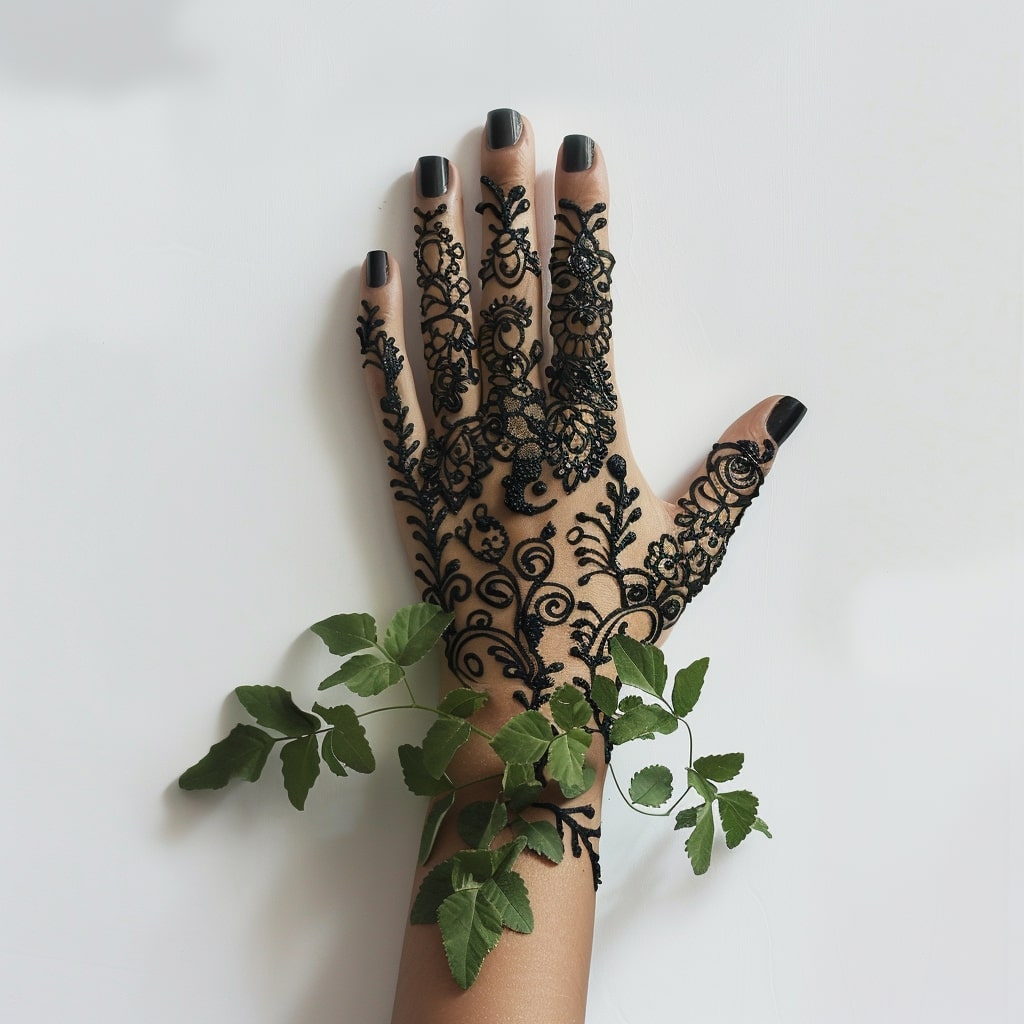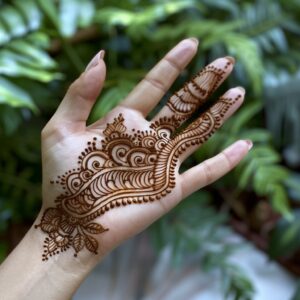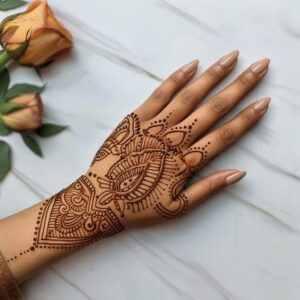Simple Left Hand Mehndi Designs: An Exploration of Elegance in Simplicity
There’s something profound about the elegance found in simplicity. In a world often drawn to the grand and complex, there is a quiet beauty in the more subtle forms of art. This is especially true in the world of Mehndi, where even the most minimalistic designs can evoke deep cultural meaning. The left hand, often considered the passive or receptive hand in many cultures, serves as the perfect canvas for these simple Mehndi designs, highlighting the grace of minimalism while celebrating the art form’s deep-rooted tradition.
I remember one afternoon in a small Rajasthani village, where I witnessed women and girls gather in preparation for a local festival. There was laughter in the air, the faint smell of henna wafting through the space, and the soft rustle of fabrics as everyone settled in for their Mehndi application. The atmosphere was electric, yet calm. In that moment, it became clear to me that even the simplest Mehndi designs carried profound significance. The way these women chose to adorn their left hand, with nothing more than a few lines and floral patterns, was not just a reflection of their personal style, but also a connection to generations of cultural tradition.
The Power of Simplicity in Mehndi Design
At first glance, a simple Mehndi design might seem unassuming compared to the intricate, full-hand patterns we often associate with weddings or grand celebrations. But therein lies its charm. In the same way that a sculptor might leave part of the stone uncut to let its natural beauty shine through, the simplicity of a Mehndi design often draws attention to the natural form of the hand itself.
For the left hand, these designs are often more delicate and restrained. A single vine stretching from the wrist to the finger, adorned with small leaves or dots, creates a sense of quiet elegance. This approach mirrors the philosophy behind minimalist art – the less you impose on the canvas, the more the inherent beauty of the form shines through. Much like how the flow of a sculpture invites the viewer to appreciate the material as much as the artist’s hand, the negative space in a simple Mehndi design allows the natural beauty of the skin to play a role in the overall composition.
For me, the left hand has always carried a certain poetic quality. It’s the hand we often use to receive, the hand that remains still while the other does the work. This passive, receptive nature is reflected beautifully in Mehndi designs. The simplicity of the lines allows the hand to breathe, leaving space for movement and expression.
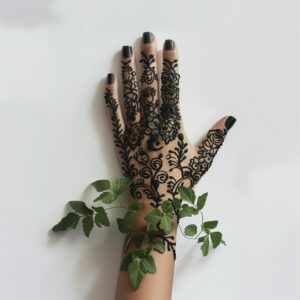
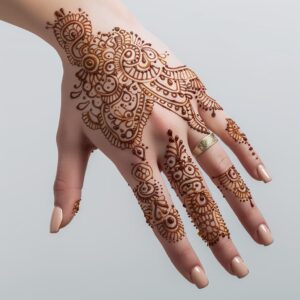
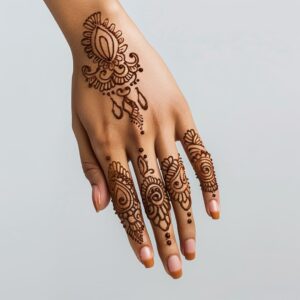
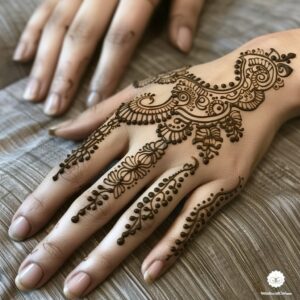
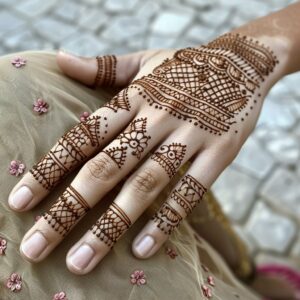
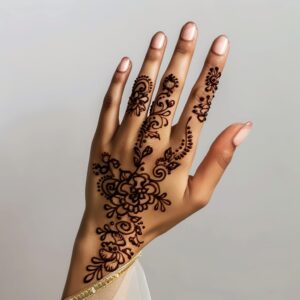
Mehndi as a Personal Reflection
I remember my own experience, the first time I sat down for a Mehndi application. It was during a summer festival, and the air was thick with excitement and anticipation. I hadn’t planned on getting Mehndi that day, but as I watched the artist deftly move her hands, creating flowing lines and patterns, I felt drawn in. She smiled at me, perhaps noticing my curiosity, and gestured for me to extend my hand.
There was something calming about the process. I chose a simple design – just a few delicate swirls along the back of my left hand, nothing too elaborate. Yet, as she applied the henna, I felt a deeper connection to the art. It was as if the design mirrored something within me – a reflection of the balance I sought between complexity and simplicity, between action and stillness. When she finished, the design was perfect in its subtlety, a graceful touch that seemed to enhance the lines of my hand rather than overpower them.
I think back to that moment often, how such a small decision – to choose simplicity – became a powerful reflection of my inner state at the time. The Mehndi felt like a conversation between me and the artist, but also between me and the long history of women who had sat in that very spot before, choosing to express themselves through this art.
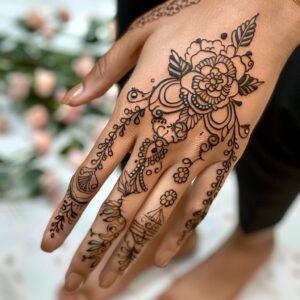
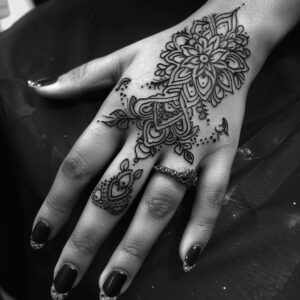
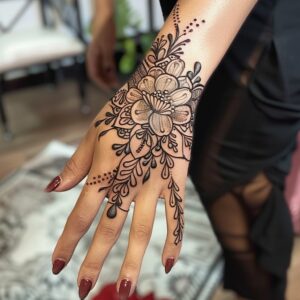
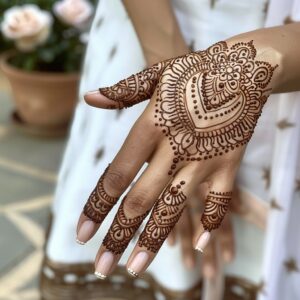
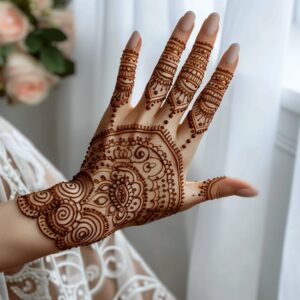
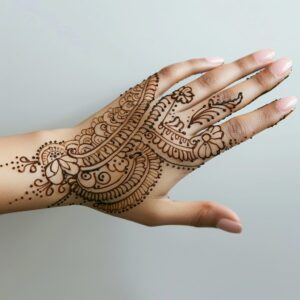
The Quiet Impact of Mehndi in Cultural Rituals
That day in Rajasthan still lingers in my mind. The women, seated in a circle, quietly watched as each design unfolded on their hands. Some opted for more elaborate patterns, while others, like me, chose simplicity. It was fascinating to see how each Mehndi design seemed to capture something personal about the wearer, whether it was a full, intricate floral arrangement or a single, trailing vine.
One woman next to me had chosen a simple, linear design for her left hand – a single line running from the wrist, breaking into small, delicate flowers at intervals. As we sat together, she explained to me that this particular pattern had been her mother’s favorite, passed down through generations. It wasn’t flashy or overwhelming, but to her, it symbolized continuity, the unbroken bond between mother and daughter.
It was in that moment I realized the true depth of Mehndi. Even the simplest design carries layers of meaning, woven through time and memory. For these women, the Mehndi wasn’t just an adornment; it was a living link to their heritage, to the stories and traditions that shaped them.
This simplicity, I learned, was not about lacking creativity or ambition. Rather, it was a deliberate choice – a way to honor the past, while remaining open to the present. The left hand, with its gentle stillness, became a perfect canvas for these quiet expressions of identity and connection.
Simplicity as an Artistic Statement
In the end, simple Mehndi designs on the left hand represent more than just artistic restraint. They symbolize a balance between beauty and function, tradition and personal expression. In their minimalism, these designs allow the wearer to connect with the art form in a deeply personal way – one that speaks of history, culture, and individuality without overwhelming the senses.
For me, simplicity in art, whether in Mehndi or sculpture, is always about finding the essence of the form. It’s about letting the natural beauty shine through, with just enough embellishment to elevate what is already there. The left hand, with its quiet, receptive nature, becomes the ideal place to express this idea of beauty in simplicity – a place where art and life can meet in perfect harmony.
Keep Exploring Mehndi Traditions:
- Arabic Mehndi designs right hand – Discover the flowing elegance of Arabic Mehndi on the right hand, where bold lines and delicate details create stunning visual art.
- Pakistani Mehndi designs full hand – Dive into the intricate and deeply meaningful world of Pakistani full-hand Mehndi designs, where tradition meets artistry in the most elaborate patterns.
